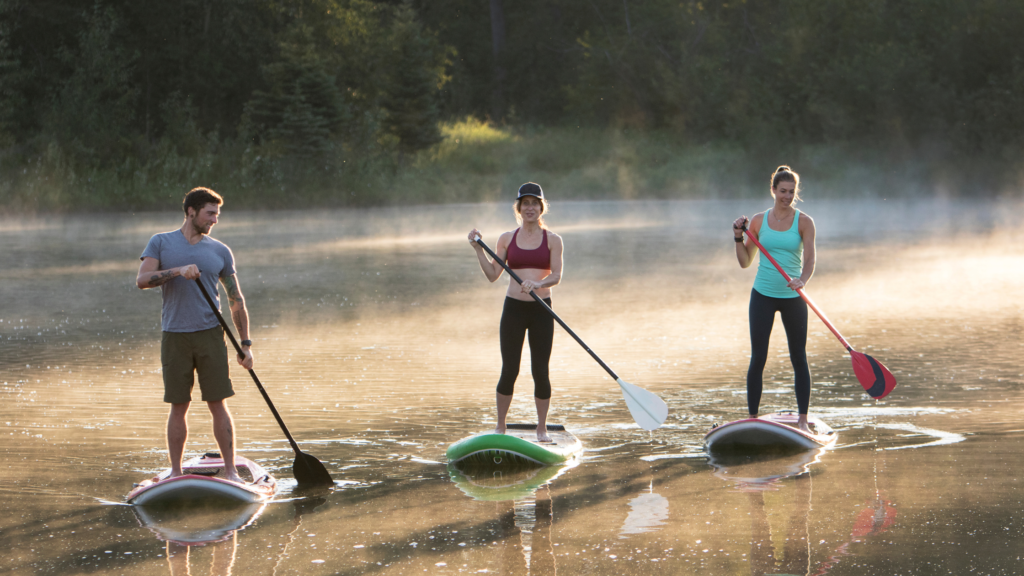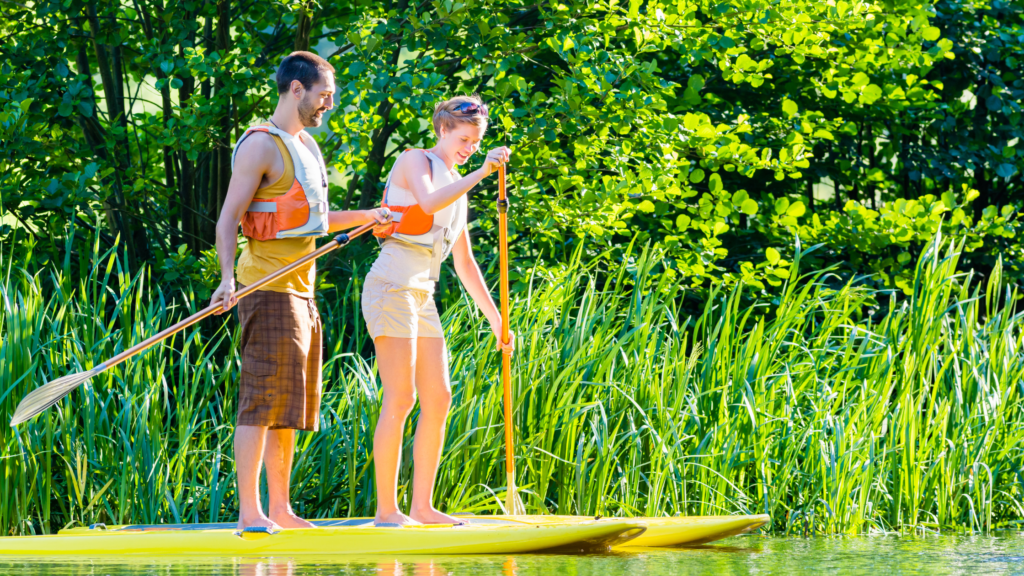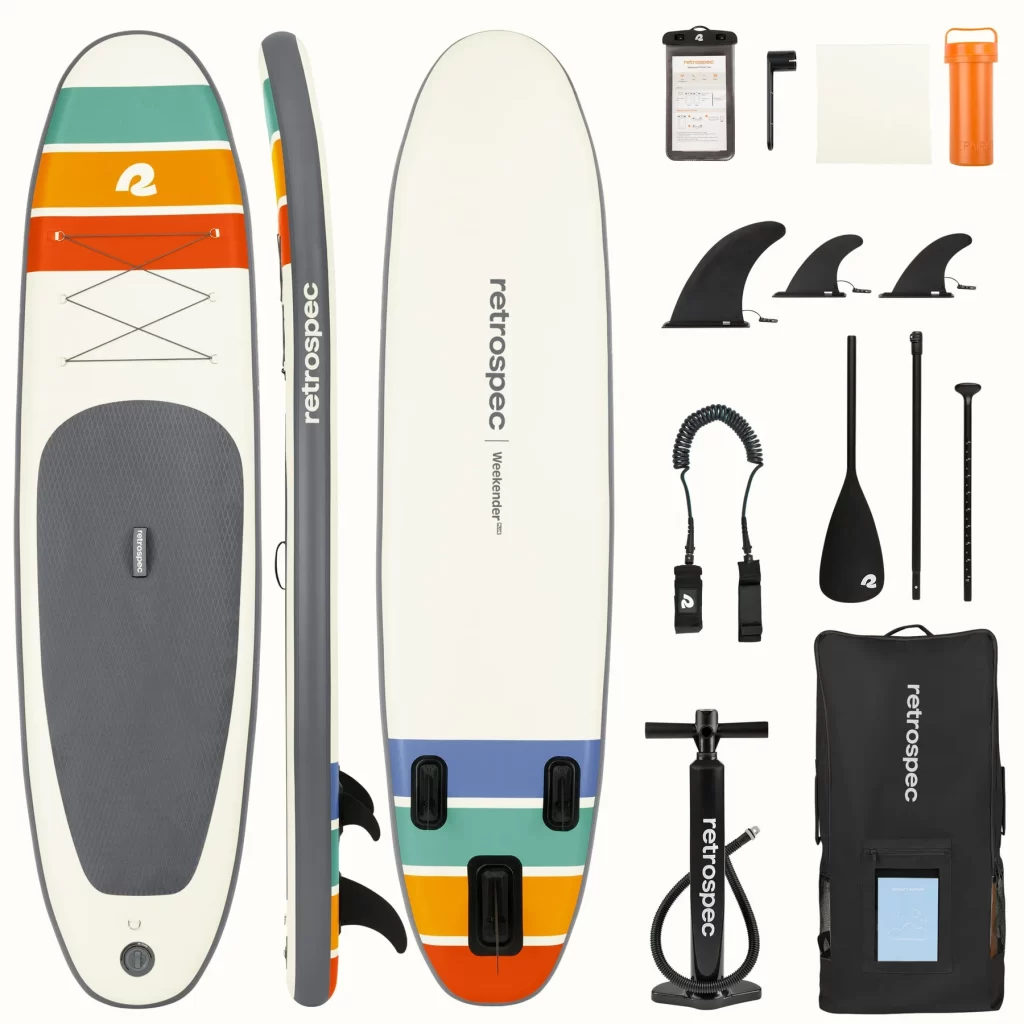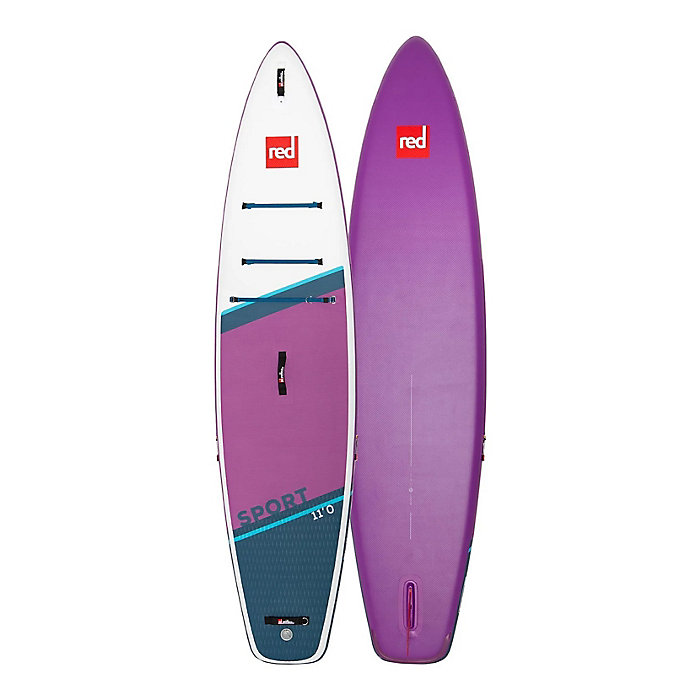Standup paddle boarding (SUP) is a fun water sport hobby that involves standing on a long, wide board and using a paddle to move across the water.
This article contains affiliate links. If you make a purchase through a link on our site you are supporting our continued efforts to educate people like you in finding new and rewarding hobbies. Thank you!
Originally developed in Hawaii as a way for surf instructors to manage groups of students, standup paddle boarding has become a popular hobby for people of all ages and skill levels.
What makes standup paddle boarding so appealing is the unique perspective it offers – you’re standing upright on the water, enjoying a unique view of your surroundings and a chance to connect with nature in a fun way.
Standup paddle boarding is a great workout that engages your core, arms, and legs. In this blog, we’ll explore the different aspects of standup paddle boarding as a fun and fulfilling hobby.

Must-Know Tips for Standup Paddle Boarding
- Proper Stance: The key to a successful paddle board experience is having the right stance. Start by standing in the center of the board with your feet parallel and hip-width apart. Keep your knees slightly bent and your core engaged. Distribute your weight evenly between both feet to maintain balance.
- Paddling Technique: Once you’re standing, use the paddle to propel yourself forward. Keep your arms straight and twist your torso to move the paddle through the water. The blade of the paddle should enter the water smoothly and exit with a clean release. To steer, alternate strokes on each side of the board.
- Safety First: Always wear a life jacket and leash when paddle boarding. A life jacket can save your life in the event of an accident, and a leash will keep your board close by if you fall off. Make sure your equipment is in good condition before heading out on the water.
- Balance: Standup paddle boarding requires core stability and balance. If you feel wobbly, try bending your knees slightly or widening your stance. Keep your eyes focused on the horizon to help maintain balance.
- Weather and Water Conditions: Be aware of the weather and water conditions before heading out. Wind, waves, and currents can affect your paddle board experience. Start with calm waters and work your way up to more challenging conditions and waves as your SUP skills improve.

By following these tips, you’ll be sure to have a safe and enjoyable paddle boarding experience!
Practice makes perfect, so don’t be discouraged if it takes some time to get the hang of it. With a little patience and determination, you’ll be gliding across the water like a pro in no time.
Board Types
There are several different types of standup paddle boards (SUPs) available, each designed for a specific purpose or activity. Consider what type of activity, and what type of water you’ll be riding on before purchasing your board…
Here are some of the most common types of SUPs:
All-Around SUP: This is the most versatile type of SUP and is designed to be used in a variety of conditions, from calm lakes to small waves. All-around SUPs are generally wider and more stable than other types, making them a great option for beginners or anyone looking for a versatile board.
Check out the Weekender Plus 10′ Inflatable Stand Up Paddle Board available from Retrospec.com…
Race SUP: Race SUPs are the fastest and most maneuverable type of SUP and are designed for competitive racing. They are typically longer and narrower than other types of SUPs, with pointed noses and hard edges for increased speed and agility.
Touring SUP: Touring SUPs are longer and narrower than all-around SUPs and are designed for paddling longer distances. They are often used for exploring lakes, rivers, and coastal areas and may have features like bungee cords and storage compartments for carrying gear.
Yoga SUP: Yoga SUPs are wider and more stable than other types of SUPs, with a large, non-slip deck pad that provides plenty of room for yoga poses. They are designed for practicing yoga on the water and may have features like tie-downs for securing yoga mats or other equipment.
Inflatable SUP: Inflatable SUPs are made from durable, puncture-resistant materials and can be inflated and deflated for easy storage and transport. They are a great option for people who don’t have a lot of storage space or who want to take their SUP on trips. Many SUP board types come in hardbody and inflatable styles.
Fishing SUP: Fishing SUPs are designed specifically for fishing and may have features like rod holders, bungee cords for securing gear, and extra stability for casting and reeling in fish.
Whitewater SUP: Whitewater SUPs are shorter and more maneuverable than other types of SUPs and are designed for navigating rapids and other whitewater conditions. They may have specialized fins and other features for increased stability and control.
Overall, the type of SUP you choose will depend on your skill level, the conditions you’ll be paddling in, and the activities you plan to do.

Resources for Stand-Up Paddle Boarding
Equipment Rental: If you’re new to standup paddle boarding or traveling, it may be more convenient to rent equipment instead of buying it. Check out local rental shops, water sport centers, or resorts that offer standup paddle board rentals.
Classes and Tours: Taking a standup paddle board class or tour can be a great way to learn new skills, meet other paddle board enthusiasts, and explore new waterways. Look for classes and tours offered by local water sport centers, resorts, or paddle board groups. Some classes may cover basic techniques, while others may focus on more advanced skills like racing or surfing.
Groups and Communities: Standup paddle boarding is a social sport, and there are many groups and communities dedicated to the activity.
Joining a group or community can provide opportunities to meet other paddle boarders, learn new skills, and discover new paddle board locations. Look for local groups on social media platforms or websites like Meetup.com.
With these resources, you can find everything you need to start paddle boarding and explore the waterways near you!

Regulations and Etiquette for Standup Paddle Boarding
Know the Rules: Different waterways may have different regulations for standup paddle boarding. Some may require a permit, restrict hours of operation, or have specific areas designated for water sports. Research local regulations before heading out on the water to avoid any legal issues.
Share the Water: Standup paddle boarding is just one of many water activities that take place on lakes, rivers, and oceans. It’s important to be respectful of other water users, such as swimmers, kayakers, and boaters. Give other users plenty of space, and yield to boats and larger vessels.
Protect the Environment: As with any outdoor activity, it’s important to be mindful of your impact on the environment. Avoid littering, stay on designated trails and areas, and respect wildlife habitats.
Be Prepared: In addition to safety equipment, bring plenty of water, snacks, and sunscreen when paddle boarding. Wear appropriate clothing and footwear for the weather and water conditions. Check the weather forecast before heading out, and avoid paddle boarding in thunderstorms or high winds.
By following these regulations and etiquette tips, you’ll ensure a safe and enjoyable paddle boarding experience for yourself and others. Standup paddle boarding can be a great way to enjoy the outdoors and stay active, but it’s important to be responsible and respectful while doing so.

Benefits of Standup Paddle Boarding
Standup paddle boarding (SUP) is a fun and popular water sport that offers numerous benefits for both physical and mental health. Here are some of the key benefits of standup paddle boarding:
- Full-Body Workout: Standup paddle boarding engages all the major muscle groups in your body, including your core, legs, arms, and back. Balancing on the board and paddling through the water requires constant movement, which can improve your strength, endurance, and balance.
- Low-Impact Exercise: Unlike high-impact activities like running or jumping, standup paddle boarding is a low-impact exercise that is gentle on your joints. This makes it a great option for people with joint pain or other physical limitations.
- Stress Relief: Spending time in nature and being on the water can have a calming effect on the mind and body. Standup paddle boarding is a great way to reduce stress, clear your mind, and connect with the natural world.
- Cardiovascular Health: Standup paddle boarding is a great way to improve your cardiovascular health. Paddling through the water can elevate your heart rate and improve your overall fitness level.
- Flexibility and Mobility: The movements involved in standup paddle boarding can improve your flexibility and range of motion. Balancing on the board and using your paddle to propel yourself through the water can help you become more agile and flexible.
- Socializing: Standup paddle boarding can be a great social activity, whether you go with friends or join a local club. It’s a fun way to connect with others and enjoy the great outdoors together.
Overall, standup paddle boarding is a fun, low-impact exercise that offers numerous physical and mental health benefits. It’s a great way to stay active, improve your fitness, and enjoy the beauty of nature all at the same time.

Conclusion
Standup paddle boarding is a fun and exciting hobby that can be enjoyed by people of all ages and skill levels.
With the right equipment, resources, and knowledge, you can explore the waterways near you and connect with nature in a unique way.
Remember to always put safety first and follow regulations and etiquette to ensure a safe and enjoyable experience for yourself and others.
Whether you’re looking for a relaxing paddle or an exhilarating adventure, standup paddle boarding is a great way to stay active, discover new places, and have fun on the water. So grab a board and paddle, and let the adventure begin!





